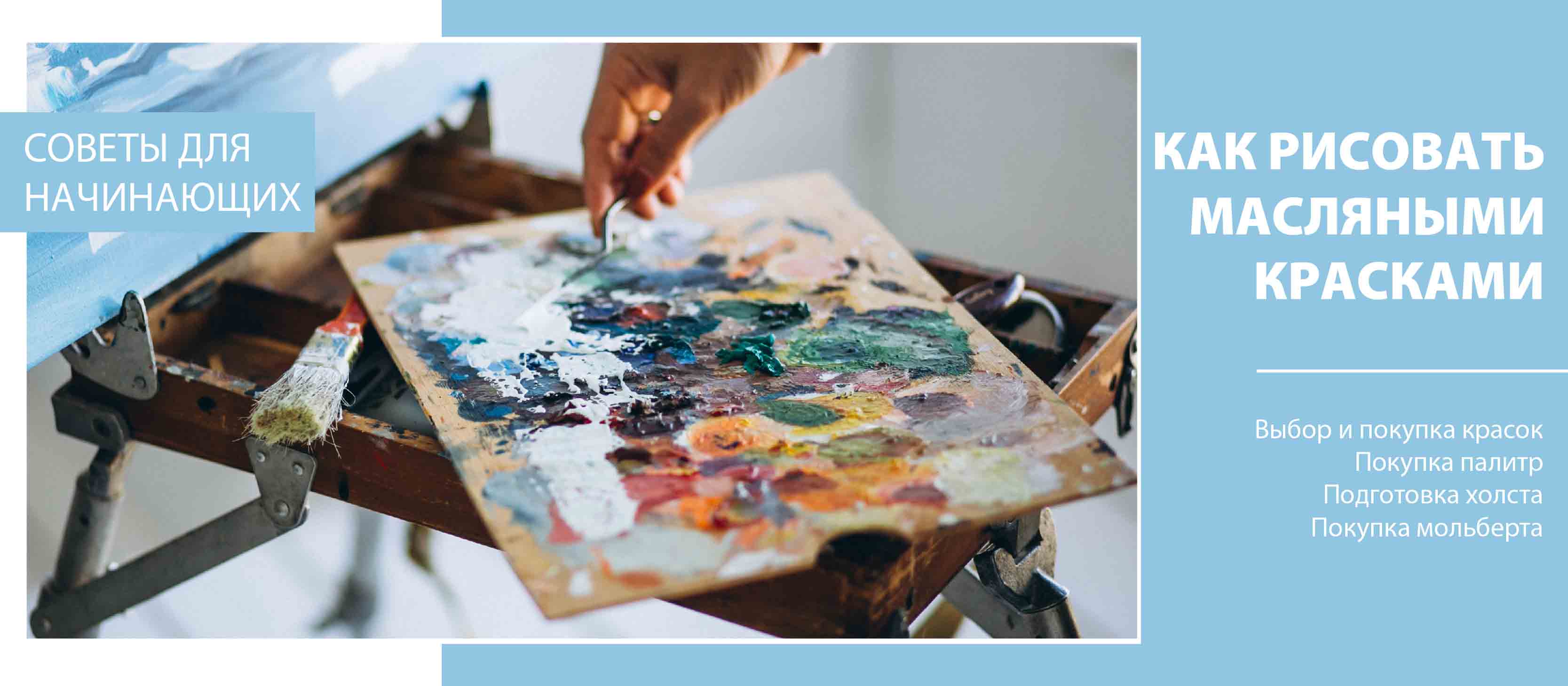
Oil painting is considered to be the most widespread in the world. After all, the famous artworks of such artists as Leonardo da Vinci, Vincent Van Gogh, Rembrandt Rhine and many others were created with oil paints. This popularity can be explained by the variety of painting techniques used with this type of paint. They allow you to write both in one layer and in multi-layer, smooth or pasty, detailed or fast in the ala prima technique. In this regard, it is absolutely not surprising that many artists try their hand at oil painting. Below we will look at the features of painting with oil paints and analyze what is needed for this.
Choosing and purchasing paints
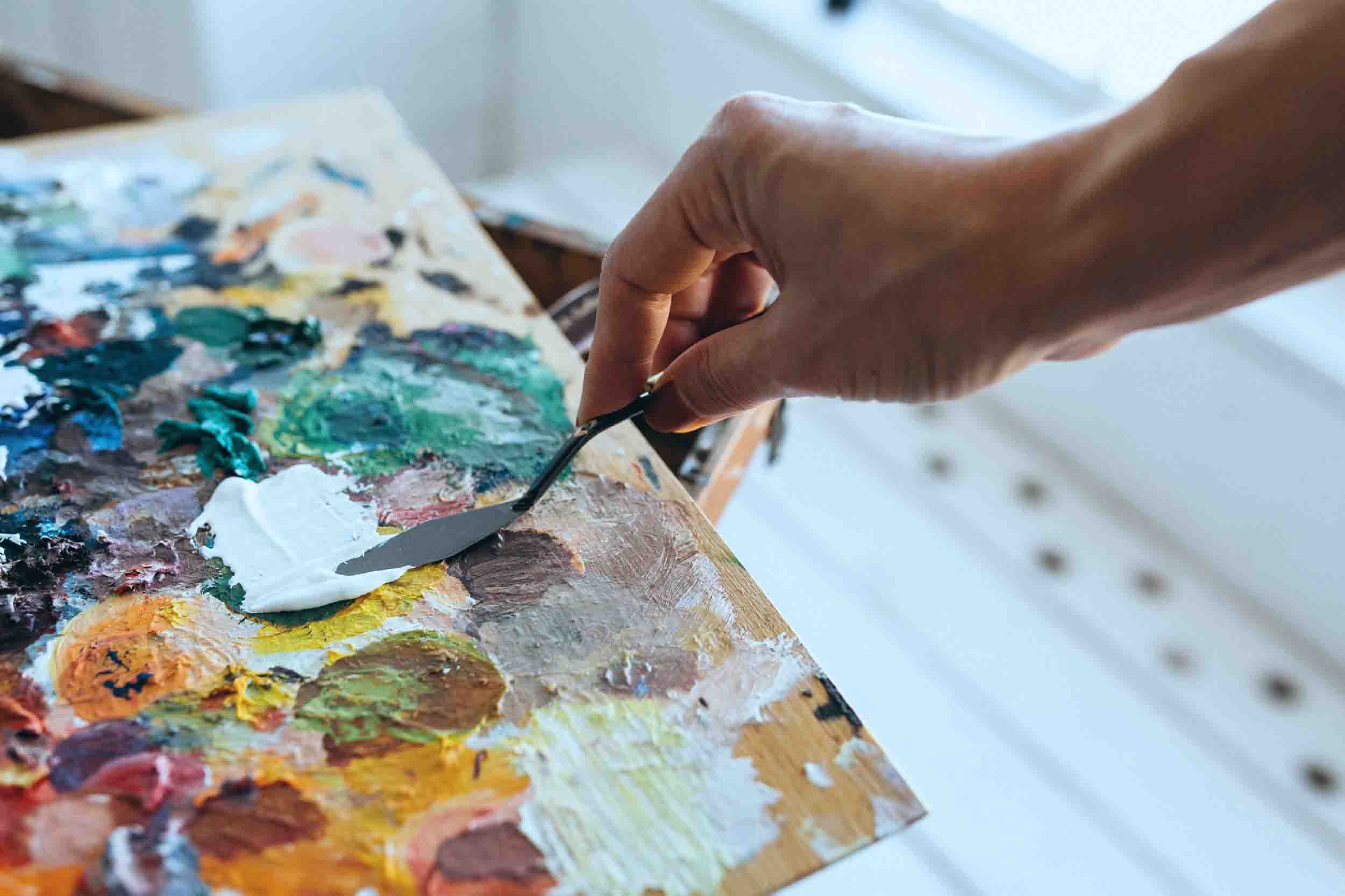
It is quite logical that paints play a key role in oil painting. Before proceeding to their choice, let's take a look at what they are. Oil paints are paints that contain two basic components: a pigment and a binder. Both organic and inorganic substances can act as a pigment. The binder is oil, in most cases linseed oil. However, poppy seeds, safflower, hemp, nut and sunflower seeds oil are also used. It is these two components that affect the quality of the paint, its durability, lightfastness and hiding power.
You can buy the paints necessary for painting with oil in a specialized art store, where usually each manufacturer has three of its lines. They differ in quality, cost and are divided into the following categories:
- Highly artistic (premium line).
- Studio.
- Sketchy.
If you are just starting your way in painting and do not yet have a lot of experience with paints, it is better to start with sketching. They belong to the most budgetary option, are not of high quality and durability, but they will help you feel the very structure of oil paints. If you already have experience in painting, it is better to immediately purchase studio paints. Their cost is higher, but it is also more pleasant to work with them. With their help, you can already create durable paintings of good quality.
Highly artistic paints are used only by professional artists to create truly durable, high quality artworks. The cost of such paints, respectively, is much higher, which makes them less in demand.
Also, when choosing a set of paints, it is enough to arm yourself with 10-12 colors. In the future, you can achieve all the necessary shades by mixing them. The main thing is to stock up on whitewash, since usually it is white paint that most often ends up first. At the same time, black paint is not always very popular in oil painting. It can be replaced with dark indigo, which will give dark strokes a certain softness.
Choosing brushes
The comfort of the artist, the quality of an artwork and the success of the entire creative process depend on the quality, shape and size of brushes. We discussed the types of brushes that are needed for painting with oil paints in the article "materials for oil painting" https://struchaieva.art/blog/materialy-dlya-maslyanoy-zhivopisi. Now I propose to pay attention to the nuances that it is advisable not to overlook when buying brushes:
- Tight clamp. The connection between the pile and the brush handle should be as tight as possible. Otherwise, the pile will constantly remain on the damp canvas.
- Synthetic brushes are softer, natural brushes are rougher. This is something to keep in mind when you are taught about the benefits of more expensive natural brushes. Both are useful to you for different purposes. Moreover, to begin with, you can arm yourself only with synthetic brushes and go to natural ones over time.
- A large set of brushes may go unclaimed. In most cases, only a few brushes turn out to be the most convenient of such a set, and the rest are forced to gather dust on the shelf. Therefore, it is best to buy several of the brushes you need separately.
Choosing thinners and solvents
It should be noted that thinners and solvents are not interchangeable, they are used to achieve different goals in painting:
- We need thinners to thin (dilute) the paint to the consistency required for a particular technique or reception. For these purposes, twins or tees are usually used. Also, turpentine or refined linseed oil can be used, however, the properties of the paint will also change along with its consistency, which may affect the further color rendering and drying time of the painting;
- Solvents are used to clean brushes and other tools, as well as the artist's hands and clothing. Usually, white spirit or turpentine acts in their role. They are not recommended to be used as thinners, since the paint will lose many valuable properties, become faded and may even crack. It is better to use tees or twins as a thinner. The combination of their components allows you not to particularly change the properties of the paint, while one-component thinners can cause some damage to the artwork.
Purchasing a palette
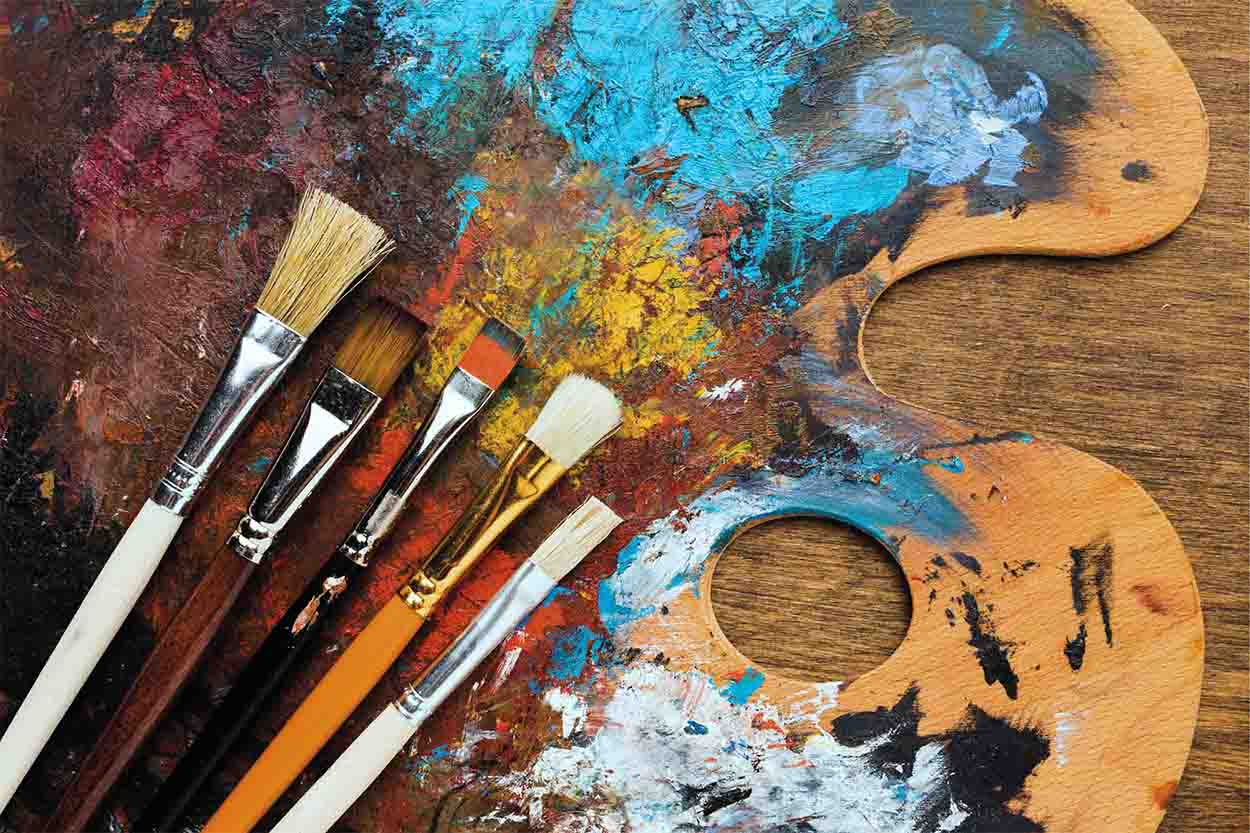
The palette is a flat surface on which the artist performs several tasks:
- placement of paints;
- mixing paints;
- fastening oil cans with thinner.
For comfortable and successful painting with oil paints, a palette is a must have. An aspiring artist can buy a palette in a specialized art store, or make it himself. Indeed, for this purpose, you can use any available material: wood, plastic, glass, cardboard. The palette can be of different shapes and sizes. It is generally accepted that the most comfortable is a light but wide wooden palette with a thumb hole.
Preparing a canvas
A properly selected canvas also plays an important role in the process of painting with oils and affects the result. Indeed, the grain of the canvas determines how the smear will look on it in the future, and the strength and durability of the painting itself depends on the material.
In modern conditions, you can purchase an already prepared, stretched and primed canvas. Of course, if you wish, it is possible to pull it onto a stretcher and prime it yourself. Both natural and synthetic materials are used for canvases. Natural materials are more durable and do not sag much over time, but synthetic canvas is fine for a start. At the moment, natural linen canvas is considered the best and most durable base.
Buying a ready-made canvas, you can immediately start painting with oil. If you want to try creating a canvas yourself, you need to arm yourself with a cloth and prepare a stretcher. Next, you need to very tightly pull the fabric over it and prime it. After drying, the fabric may sag a little, therefore, after priming it is better to drag it a little more tightly onto the stretcher again. After completing these manipulations, you can safely start painting your picture with oil paints.
Buying an easel
An easel is not an essential attribute required for oil painting. However, the drawing process will become more comfortable and enjoyable with it. After all, it will allow you to place the picture at the required level as conveniently as possible. This gives you a perfect overview of the artwork and can spot your own shortcomings. Moreover, the easel is a reliable support for your painting, which will protect it from possible falls and mechanical damage.
Additional accessories, materials and supplies
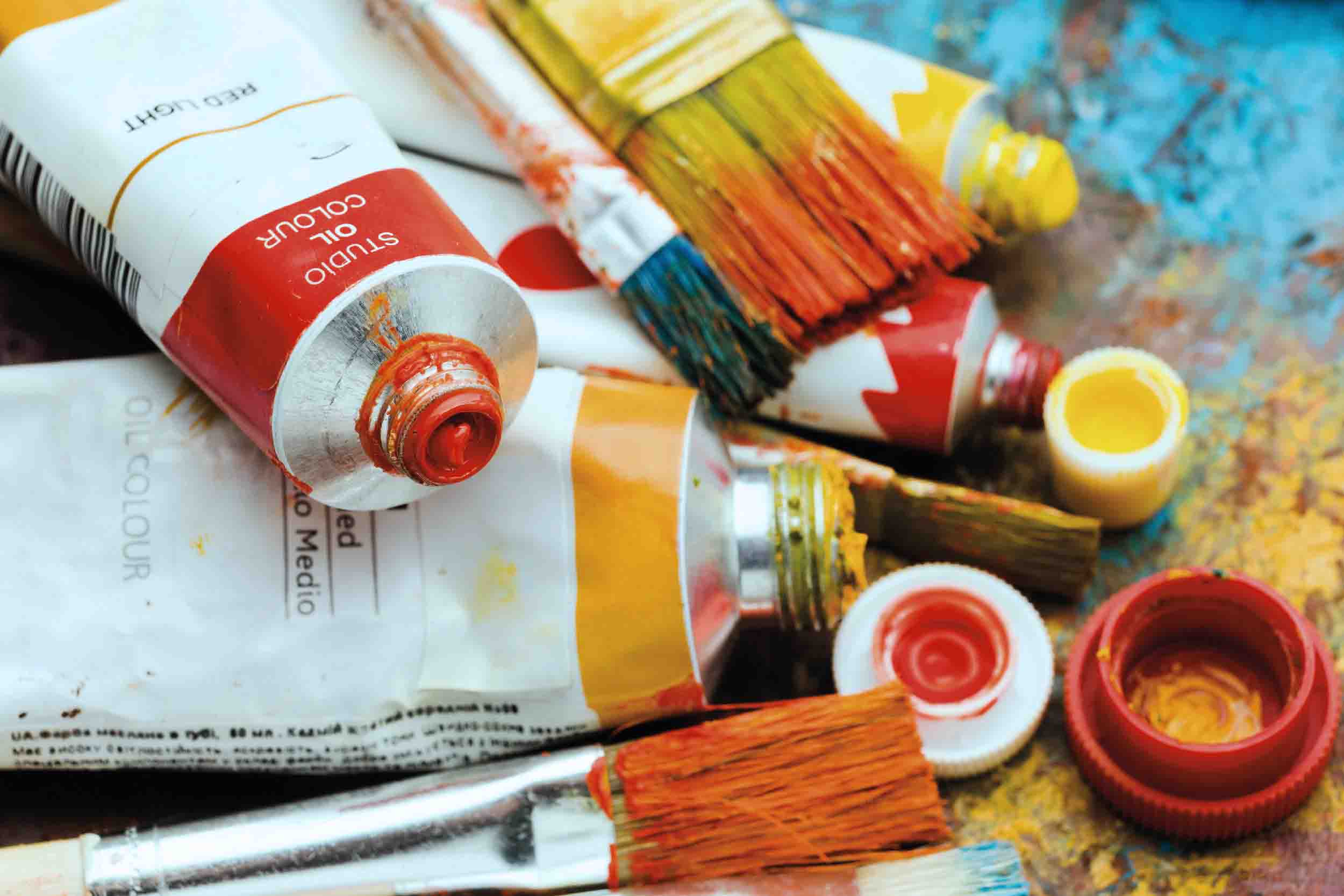
The above are the required or desirable materials and tools that you will need to work with oil painting. However, there are also accessories and tools, the presence of which is not a prerequisite, but will greatly simplify and brighten the very process of creating an oil painting.
First of all, these include a variety of jars and rags with which you will wash your brushes and dry your hands. Old newspapers or paper towels are also useful. After all, being carried away by the process, it is quite easy to get yourself and objects around you dirty.
The next useful attribute will be a tool called a palette knife. In its appearance, it partly resembles a spatula for putty. It is used to mix or remove excess paint from the canvas and apply volumetric strokes.
If you want to paint with oil in nature, a sketchbox will become an indispensable assistant. It is a special box for transporting paints and other supplies needed for oil painting. Also, you can meet its other name - plein air (from French plain air - open air).
Another item that simplifies the oil painting process is the oil can. This is a small container with a clip for attaching to a palette. It can be simple and double, and its purpose can be guessed from the name. It is used to dilute paints to the required consistency.
Closing the list is a protective varnish, which is not required to complete an oil painting, but highly desirable if you are concerned about the longevity of your artwork. Moreover, it gives the colors brightness, and the whole picture brilliance and saturation.
How to use correctly oil paints
There are many techniques in oil painting. However, they can be divided into two main categories:
- multilayer painting;
- single layer painting, also known as ala prima.
Multilayer painting is a more complex technique that involves understanding the properties and characteristics of oil paints. Because of this, if you do not have any experience with oil painting yet, it is better to start with a one-layer oil painting technique. However, in this case, it is also necessary to take into account some nuances. Oil paint applied in one layer may shrink and crack when dry. To avoid such a nuisance, artists usually apply the first layer of paint, give it time to dry completely, and then proceed to painting with oil in a single layer technique.
You can visually familiarize yourself with with the lessons of oil painting for beginners in the video tutorial:
More tips for oil painting
When starting the process of creating a painting, you need to provide yourself with comfortable conditions that will allow you not to be distracted by trifles and details that can bring down the right mood. In this regard, below we have presented a list of basic tips to help create comfort and peace of mind while working with oil paints.
- Provide yourself a work area with ample light.
- Prepare a special place for storing oil paints and necessary tools and materials.
- Prepare more white than the rest of the paints.
- Arm yourself with rags, paper towels and old newspapers.
- Consider the composition of your painting in advance.
And the most important thing is a good mood and a desire to draw. In this case, you will definitely succeed.
In the online gallery of oil paintings Struchaieva Art you can find and buy paintings of different themes and genres. I paint with oils and dry pigments, using special durable stretchers and woolen canvases.

The earliest work of Leonardo da Vinci
A small painted tile caused quite a stir among the scientists of the art world. This is because some scholars believe that the recently discovered work is Leonardo da Vinci's earliest known work
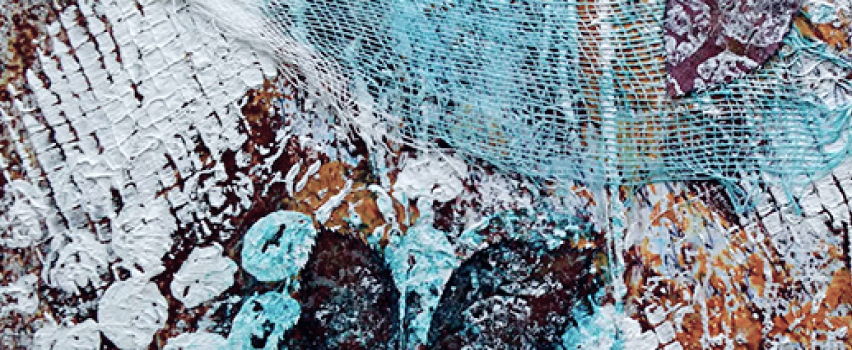
Interesting facts about painting
Paintings hold the secrets of the creator. Sometimes we manage to solve them, but many of them continue to be riddles, or simply stay unnoticed.












Thank you, your review has been sent successfully.
It will be posted on the site after moderation.